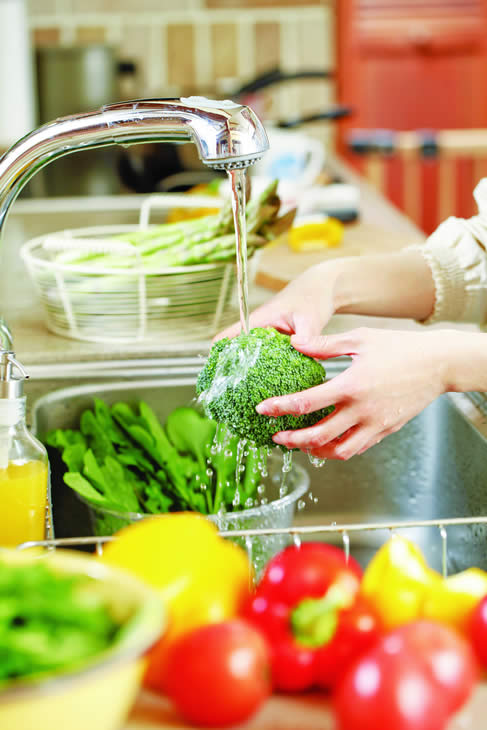Tainted food and beverages may contain disease causing agents such as bacteria, viruses and parasites. These agents are often the culprits behind cases of tummy upset and diarrhoea. Severe illnesses that could arise from consuming contaminated food and beverages include cholera, typhoid fever, hepatitis A, food poisoning and dysentery. All five illnesses are currently monitored by the Health Ministry.
According to the World Health Organisation (WHO), food and waterborne diseases kill more than two million people globally every year, with the majority of the victims being
children. The good news is, you can keep on top of food and water-borne illnesses by following proper food hygiene and safety procedures.
Six tips for food safety and hygiene
Here are six key points to consider before you start whipping up a delicious meal:
1. Choose foods and beverages that are safe and clean
Always buy raw foods that are fresh and clean, processed foods that are properly labelled and not yet expired, and choose cans (or any other packaging) that are in good condition, and are not dented or bulging. When buying cold/frozen foods, pick them up just before leaving and place them in a cooler box/bag on your way home.
2. Store food in an appropriate manner
Perishable foods like milk, yoghurt, and eggs should be stored at 5°C, while meat, poultry, and seafood should be frozen at -18°C. Always separate raw foods from cooked foods, whether you are preparing a meal, or storing them in the fridge. Do not store leftovers for more than two days at 5°C; to keep them longer, freeze them at -18°C.
3. Maintain hygiene when preparing meals
Always wash your hands and cooking utensils with soap and clean water before preparing meals. Avoid handling food if you have open wounds. Use different utensils/equipment for handling raw and cooked foods (e.g. do not use the same knife and chopping board for cutting raw meat, and slicing veggies for a salad). Instead of thawing food at room temperature, leave it in the fridge or under clean running water.
4. Thoroughly cook all foods
All foods must be properly and thoroughly cooked. Cook beef or poultry until it’s no longer pink. When making soup/stew, always bring it to a boil first. If you reheat leftovers, make sure they are reheated thoroughly.
5. Ensure cleanliness when serving meals
Always use clean tableware when serving food. If you are laying the table and plan to eat later, ensure the food is covered and do not leave at room temperature for more than four hours. The ideal storage temperature for hot foods is above 60°C, while cold foods should be kept below 5°C.
6. If you’re eating out, do so at safe/clean premises
Look for clean premises that are far away from potential points of contamination such as drains, rubbish dumps, septic tanks, waste disposals, etc. Avoid these premises if:
- you can see signs of rodents, cockroaches, or any other pests
- they use tableware that are not clean or in poor condition (broken/chipped cups)
- they do not serve food that is properly covered
- their staff do not practise good personal hygiene or habits
Keeping your little ones safe
As parents, the onus is on you to be vigilant in preventing your child and your family from suffering any food- or water-borne diseases. Teach your child the importance of hygiene. Washing hands is one of the most basic hygiene practises that is often overlooked. Teach him to wash his hands before and after meal, after going to toilet or blowing his nose, after touching animals or pets, and after touching garbage or using the rubbish bin.






Comments